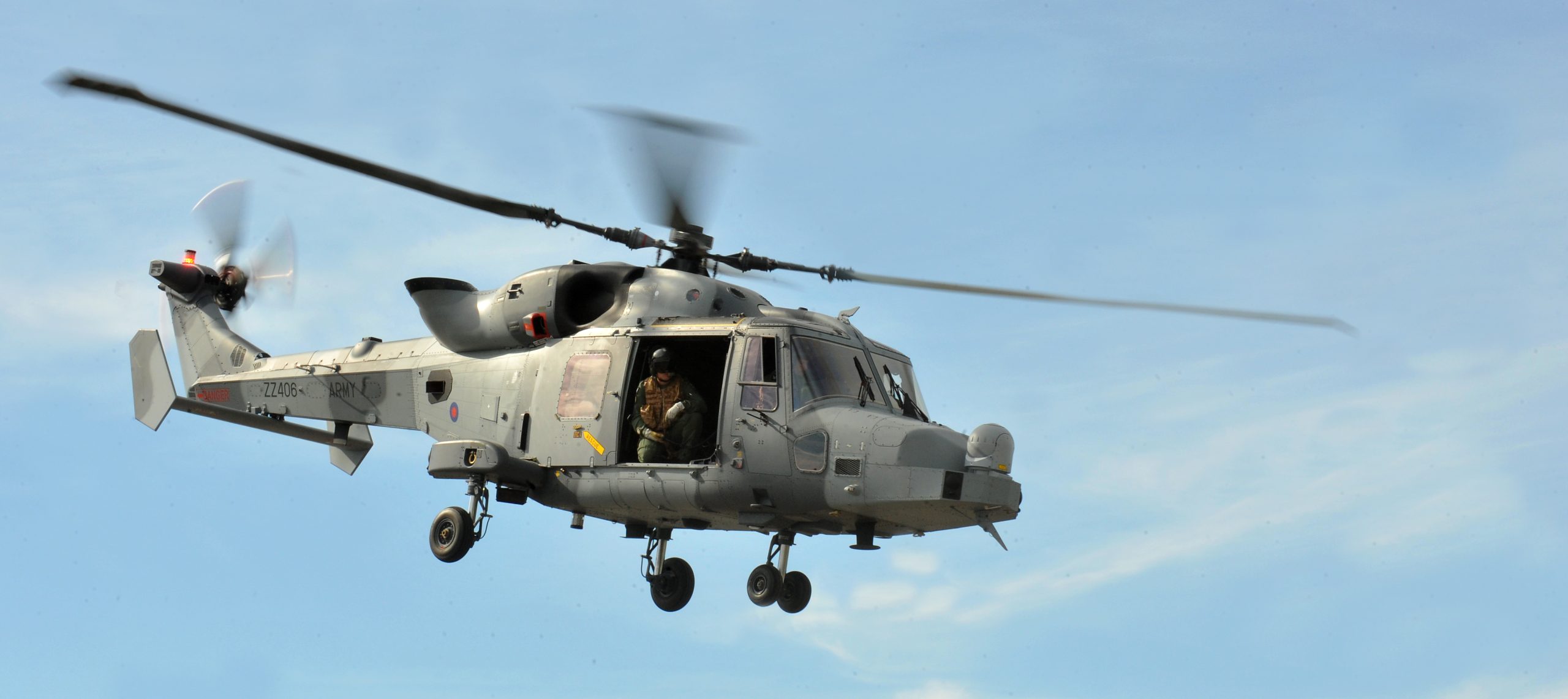
Westland Lynx and Wildcat
The Royal Navy's Black Cats team currently consists of two HMA.2 Wildcat helicopters and is presenting ownership of this type of helicopter in demonstrations.
Designed by Westland and manufactured by Leonardo, the Lynx family of helicopters is currently used by the armed forces of 9 countries: Great Britain, Algeria, Brazil, Philippines, Germany, Malaysia, Oman, Republic of Korea and Thailand. Over half a century, more than 500 copies were built, used as helicopters to fight submarines, surface ships and tanks, to perform reconnaissance, transport and rescue missions. The latest rotorcraft from this family, the AW159 Wildcat, is used by the Philippine and Republic of Korea Naval Aviation, as well as by the British Army Aviation and the Royal Navy.
In the mid-60s, Westland planned to build successors to the heavy Belvedere helicopters (twin-rotor WG.1 project, takeoff weight 16 tons) and Wessex medium helicopters (WG.4, weight 7700 kg) for the British army. . In turn, WG.3 was supposed to be a transport helicopter for the army of the 3,5 t class, and WG.12 - a light observation helicopter (1,2 t). Developed from WG.3, the Whirlwind and Wasp successor, which later became the Lynx, was designated WG.13. The military requirements of 1964 called for a robust and reliable helicopter capable of carrying 7 soldiers or 1,5 tons of cargo, armed with weapons that would support the troops on the ground. The maximum speed was to be 275 km / h, and the range - 280 km.
Initially, the rotorcraft was powered by two 6 hp Pratt & Whitney PT750A turboshaft engines. each, but their manufacturer did not guarantee that a more powerful variant would be developed in time. In the end, it was decided to use the 360 hp Bristol Siddeley BS.900, later the Rolls-Royce Gem, which was started at de Havilland (hence the traditional G name).
The then good Anglo-French cooperation in the aviation industry and similar requirements imposed by the military of both countries resulted in the joint development of three types of rotorcraft, differing in size and tasks: medium transport (SA330 Puma), specialized airborne and anti-tank (future Lynx) and light multi-purpose machine (SA340 Gazelle). All models were to be purchased by the military of both countries. Sud Aviation (later Aerospatiale) officially joined the Lynx program in 1967 and was to be held responsible for 30 percent. production of aircraft of this type. In subsequent years, cooperation resulted in the purchase of SA330 Puma and SA342 Gazelle by the British armed forces (the French were the leaders of the project and construction), and the French naval aviation received naval Lynxes of Westland. Initially, the French also intended to purchase armed Lynxes as attack and reconnaissance helicopters for the aviation of the ground forces, but at the end of 1969 the French army decided to withdraw from this project.
Pages Public Figure Westland Lynx 50 years ago, January 21, 1971
Interestingly, thanks to cooperation with the French, the WG.13 became the first British aircraft designed in the metric system. The helicopter model, originally designated Westland-Sud WG.13, was first shown at the Paris Air Show in 1970.
It is worth noting the participation in the development of Lynx by one of the Polish engineers Tadeusz Leopold Ciastula (1909-1979). A graduate of the Warsaw University of Technology, who worked before the war, incl. as a test pilot in the ITL, in 1939 he was evacuated to Romania, then to France, and in 1940 to Great Britain. From 1941 he worked in the aerodynamics department of the Royal Aircraft Establishment and also flew fighters with 302 Squadron. Skeeter helicopter, later manufactured by Saunders-Roe. After the company was taken over by Westland, he was one of the creators of the P.1947 helicopter, serially produced as the Wasp and Scout. The work of the engineer Ciastła also included overseeing the modification of the power plant of the Wessex and Sea King helicopters, as well as the development of the WG.531 project. In later years, he also worked on the construction of hovercraft.
The flight of the prototype Westland Lynx took place 50 years ago on March 21, 1971 in Yeovil. The yellow-painted glider was piloted by Ron Gellatly and Roy Moxum, who made two 10- and 20-minute flights that day. The crew was manned by test engineer Dave Gibbins. Flight and testing were delayed several months from their original schedule due to Rolls-Royce's troubles fine-tuning the power plant. The first BS.360 engines did not have the declared power, which adversely affected the characteristics and properties of the prototypes. Due to the need to adapt the helicopter for transportation on board the C-130 Hercules aircraft and to be ready for operation within 2 hours after unloading, the designers had to use a fairly “compact” unit of the bearing part and the main rotor with elements forged from a single block of titanium. Detailed solutions for the latter were developed by French engineers from Aerospatiale.
Five prototypes were built for factory testing, each painted a different color for differentiation. The first prototype marked XW5 was yellow, XW835 grey, XW836 red, XW837 blue and the last XW838 orange. Since the gray copy passed ground resonance tests, the red Lynx took off second (September 839, 28), and the blue and gray helicopters took off next in March 1971. In addition to prototypes, 1972 pre-production airframes were used to test and fine-tune the design, configured to meet the requirements of future recipients - the British Army (with a skid landing gear), the Navy and the French Aeronavale Naval Aviation (both with a wheeled landing gear). Initially, there were supposed to be seven of them, but during the tests one of the cars crashed (the tail boom folding mechanism failed) and another one was built.
